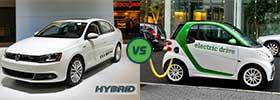Difference between HTC Butterfly and Samsung Galaxy S3
Key difference: The HTC Butterfly is a high-end phone by the HTC Corporation. The HTC Butterfly is sold in four variants: Droid DNA; J Butterfly HTL21; Butterfly X920d; and Butterfly X920e. They are all powered on a Quad-core 1.5 GHz Krait processor. The HTC Droid has the Quadcomm MDM615m, while the Butterfly variants have the Qualcomm APQ8064 chipset. They all have 2 GB of RAM. The Galaxy S3 is a slate-format multi-touch smartphone that was launched in May 2012. It is the successor of Galaxy S2 and Galaxy S but abandons the rectangular design of the predecessors and opts for more rounded corners. The S3 supports a 1.4 GHz Cortex-A9 Quad-core processor and 1 GB RAM.
 The HTC Butterfly is a high-end phone by the HTC Corporation. The phone has been quite popular all over the world; however, most people don’t know exactly how popular the phone has actually been. This is mainly because not many people know that the HTC Butterfly and HTC Droid DNA is actually pretty much the same phone, with only a few differences. The differences are only there to make the phone more regional specific.
The HTC Butterfly is a high-end phone by the HTC Corporation. The phone has been quite popular all over the world; however, most people don’t know exactly how popular the phone has actually been. This is mainly because not many people know that the HTC Butterfly and HTC Droid DNA is actually pretty much the same phone, with only a few differences. The differences are only there to make the phone more regional specific.
The HTC Butterfly is sold in four variants: Droid DNA in the United States on the Verizob Network; J Butterfly HTL21 in Japan on KDDI's au network; Butterfly X920d in Taiwan, South East Asia and India; and Butterfly X920e in China and Russia.
All the variants have most of the same features. They are all powered on a Quad-core 1.5 GHz Krait processor. The HTC Droid has the Quadcomm MDM615m, while the Butterfly variants have the Qualcomm APQ8064 chipset. They all have 2 GB of RAM and Adreno 320 graphics processor. They all have an 8 MP primary camera and a 2.1 MP secondary front facing camera. The display is a 5 inch Super LCD3 capacitive touchscreen with Corning Gorilla Glass 2. At the time of the launch the phone was the second phone in the market to feature a 1080p display. The phone has Android version 4.1, but is upgradable to Android 4.2.
The HTC Droid DNA differs from the other variants, in that it supports wireless charging, but lacks a MicroSD slot. The Droid DNA and the J Butterfly both support CDMA and LTE connections, as well as UMTS. However, only the Droid DNA comes with quad band UMTS radio. The X920d and X920e, on the other hand, do not even have LTE support. There are also some subtle differences regarding color accents, buttons and logo placement. However, these are minor and so not affect the phones.
 Samsung is one of the key players in the smartphone market. Their innovative Galaxy line of phones and tablets has been making public loyal to the brand. The Galaxy S3 is a slate-format multi-touch smartphone that was launched in May 2012. It is the successor of Galaxy S2 and Galaxy S but abandons the rectangular design of the predecessors and opts for more rounded corners making it resemble the Galaxy Nexus. The S3 sports a 4.8 HD Super AMOLED screen with corning gorilla glass 2. It is offered with Android v4.0.4 (Ice Cream Sandwich) and can be upgraded to 4.1.2 (Jelly Bean). The Galaxy S III has a polycarbonate plastic chassis and is available in a variety of different colors. The S3 supports a 1.4 GHz Cortex-A9 Quad-core processor, Mali-400MP GPU and 1 GB RAM. The S3 is available with 16 or 32 GB internal storage capacity, which can be expanded up to an additional 64 GB.
Samsung is one of the key players in the smartphone market. Their innovative Galaxy line of phones and tablets has been making public loyal to the brand. The Galaxy S3 is a slate-format multi-touch smartphone that was launched in May 2012. It is the successor of Galaxy S2 and Galaxy S but abandons the rectangular design of the predecessors and opts for more rounded corners making it resemble the Galaxy Nexus. The S3 sports a 4.8 HD Super AMOLED screen with corning gorilla glass 2. It is offered with Android v4.0.4 (Ice Cream Sandwich) and can be upgraded to 4.1.2 (Jelly Bean). The Galaxy S III has a polycarbonate plastic chassis and is available in a variety of different colors. The S3 supports a 1.4 GHz Cortex-A9 Quad-core processor, Mali-400MP GPU and 1 GB RAM. The S3 is available with 16 or 32 GB internal storage capacity, which can be expanded up to an additional 64 GB.
The phone boasts an 8 megapixel Auto Focus camera with flash, zero shutter lag and BSI. It also supports a 1.9 megapixel secondary camera that is capable of recording HD videos @30fps. When the phone was initially launched in May, the phone was considered to have been backed with innovative features and the TouchWiz "Nature UX" GUI was considered to be advanced. The GUI also included the “Water Lux” effect which can produce water ripples on contact. The phone also offered S Voice in response to Apple’s Siri, which enabled users to verbally control 20 functions on the phone. It was effectively considered as a iPhone killer. It also received additional publicity because of the ongoing patent infringement lawsuits against Apple.
The information for the detailed table about the two phones has been taken from the HTC website, the Samsung website, engadget.com and GSMarena.com.
|
|
HTC Butterfly (HTC Droid DNA) |
Samsung Galaxy S3 |
|
Launch Date |
November 2012 |
May 2012 |
|
Company |
HTC |
Samsung Electronics |
|
Size |
143 x 70.5 x 9.1 mm (5.63 x 2.78 x 0.36 in) |
136.6 x 70.6 x 8.6 mm |
|
Display |
Super LCD3 capacitive touchscreen, 16M colors |
4.8 inch HD Super AMOLED |
|
Screen |
1080 x 1920 pixels, 5.0 inches (~441 ppi pixel density) |
1280x720 pixels |
|
Protection |
Corning Gorilla Glass 2 |
Corning Gorilla Glass 2, oleophobic fingerprint-resistant coating. |
|
Weight |
141.7 g (4.97 oz) |
133 g |
|
2G Network |
GSM 850 / 900 / 1800 / 1900 or CDMA 800 / 1900 |
2.5G (GSM/ GPRS/ EDGE): 850/900/1800/1900 MHz |
|
3G Network |
HSDPA 850 / 900 / 1900 / 2100 or CDMA2000 1xEV-DO |
(HSPA+ 21Mbps): 850/900/1900/2100 MHz |
|
4G Network |
LTE 700 (market dependent) |
LTE availability depends on the market. |
|
GUI |
HTC Sense UI 4+ |
TouchWiz "Nature UX" |
|
CPU speed |
Quad-core 1.5 GHz Krait |
Quad-core 1.4 GHz Cortex-A9 |
|
GPU |
Adreno 320 |
Mali-400MP |
|
OS |
Android OS, v4.1 (Jelly Bean), planned upgrade to v4.2 (Jelly Bean) |
Android OS, v4.0.4 (Ice Cream Sandwich), upgradeable to 4.1.2 (Jelly Bean) |
|
Chipset |
Qualcomm Snapdragon MDM615m or APQ8064 |
Exynos 4412 Quad |
|
RAM |
2 GB RAM |
1 GB |
|
SIM Size |
Micro-SIM |
microSIM |
|
Internal Memory |
16 GB (11 GB user available) |
16/32/64 GB (The 64GB model has been discontinued) |
|
Expandable Memory |
microSD, up to 32 GB (Market dependent) |
microSD up to 64 GB |
|
Sensors |
Accelerometer, gyro, proximity, compass |
Accelerometer, RGB light, digital compass, proximity, gyro, barometer |
|
Connectivity |
|
|
|
Data |
GPRS, EDGE, WLAN, Bluetooth, USB, NFC (Market dependent). |
GPRS, EDGE, WLAN, Bluetooth, NFC and USB. |
|
Speed |
HSPA, EV-DO Rev. A, up to 3.1 Mbps; LTE, Cat3, 50 Mbps UL, 100 Mbps DL |
HSDPA, 21 Mbps; HSUPA, 5.76 Mbps |
|
WLAN |
Wi-Fi 802.11 a/b/g/n, Wi-Fi Direct, DLNA, Wi-Fi hotspot |
Wi-Fi 802.11 a/b/g/n, dual-band, DLNA, Wi-Fi Direct, Wi-Fi hotspot |
|
Bluetooth |
Yes, v4.0 with A2DP |
Bluetooth 4.0 with A2DP, EDR. |
|
USB |
Yes, microUSB v2.0 (MHL) |
micro-USB 2.0; USB On-the-go. |
|
Primary Camera |
8 MP, 3264x2448 pixels, autofocus, LED flash |
8 megapixel Auto Focus camera with Flash & Zero Shutter Lag, BSI. |
|
Secondary Camera |
2.1 MP, 1080p@30fps |
1.9 Mega pixel camera, HD recording @30fps with Zero Shutter Lag, BSI |
|
Video |
1080p@30fps, stereo sound rec., video stabilization |
1080p@30fps, zero shutter lag. |
|
Camera Features |
Simultaneous HD video and image recording, geo-tagging, face and smile detection, autofocus, LED flash |
Simultaneous HD video and image recording, geo-tagging, touch focus, face and smile detection, image stabilization. Burst shot & Best photo, Recording snapshot, HDR. |
|
Sound Enhancement |
Built-in headset amplifier and dedicated amp for the external rear-speaker, Beats Audio |
Active noise cancellation with dedicated mic. |
|
Audio supported formats |
MP3/eAAC+/WMA/WAV player |
Audio Codec: MP3, AMR-NB/WB, AAC/AAC+/eAAC+, WMA, OGG, FLAC, AC-3, apt-X. |
|
Video supported formats |
DivX/XviD/MP4/H.263/H.264/WMV player |
Video Codec: MPEG4, H.264, H.263, DivX, DivX3.11, VC-1, VP8, WMV7/8, Sorenson Spark Recording & Playback: Full HD (1080p). |
|
Battery Capacity |
Non-removable Li-Ion 2020 mAh battery |
2100 mAh battery |
|
Available Colors |
Black |
Pebble blue, Marble white, Amber brown, Garnet red, Sapphire black, Titanium grey, La Fleur |
|
Messaging |
SMS (threaded view), MMS, Email, Push Email |
SMS(threaded view), MMS, Email, Push Mail, IM, RSS |
|
Browser |
HTML5 |
HTML, Adobe Flash |
|
Radio |
- |
Stereo FM radio with RDS |
|
GPS |
Yes, with A-GPS support and GLONASS |
A-GPS support and GLONASS |
|
Java |
Yes, via Java MIDP emulator |
Java MIDP emulator |
|
Additional Features |
|
|
Image Courtesy: htc.com, samsung.com









Add new comment